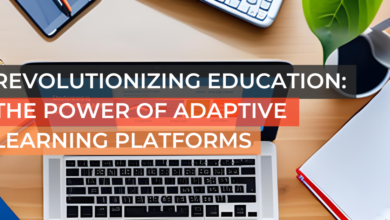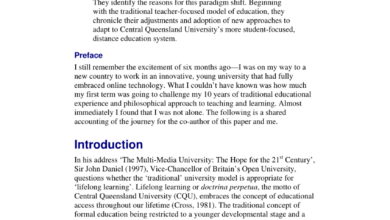Distance Learning: Redefining Education in the Digital Age
Contents
- 1 Introduction
- 2 Strengths of Distance Learning
- 3 Weaknesses of Distance Learning
- 4 Distance Learning Programs: A Comprehensive Overview
- 5 Frequently Asked Questions about Distance Learning
- 5.1 What are the different types of distance learning?
- 5.2 How do I choose the right distance learning program?
- 5.3 What are the benefits of distance learning?
- 5.4 What are the challenges of distance learning?
- 5.5 Is distance learning as effective as traditional classroom-based education?
- 5.6 How do I succeed in distance learning?
- 5.7 How do I get financial aid for distance learning?
- 5.8 How do I find a job after completing a distance learning program?
- 6 Conclusion
- 7 Disclaimer
Introduction
Greetings, Readers!
In the contemporary era marked by technological advancements, distance learning has emerged as a transformative force in the education landscape. It has shattered geographical barriers and democratized access to educational opportunities, enabling individuals across the globe to pursue their academic endeavors from the comfort of their homes.
Distance learning encompasses a broad spectrum of instructional methods and technologies that facilitate learning beyond the traditional classroom setting. It empowers learners to engage in educational content, interact with educators and peers, and complete assignments online or through other distance-based means.
This article delves into the multifaceted nature of distance learning, exploring its strengths and weaknesses, examining its impact on the educational landscape, and providing practical guidance for learners considering this innovative approach to education.
Strengths of Distance Learning
Flexibility and Convenience
Distance learning offers unparalleled flexibility, allowing learners to study at their own pace and on their own time. It eliminates geographical constraints, enabling individuals in remote areas or with demanding schedules to access educational opportunities.
Cost-Effectiveness
Compared to traditional classroom-based education, distance learning can be more cost-effective. It reduces expenses associated with transportation, parking, and on-campus housing, making it an attractive option for budget-conscious learners.
Wide Range of Course Offerings
Distance learning institutions often provide a wider range of course offerings than traditional universities. This allows learners to specialize in niche areas or pursue interdisciplinary studies that may not be available in their local area.
Access to Experts
Distance learning often connects students with leading experts in their field. Online courses and programs frequently feature collaborations with industry professionals and renowned researchers, providing learners with access to valuable insights and practical knowledge.
Personalized Learning
Distance learning platforms often employ adaptive learning technologies that tailor educational content to the individual needs and learning styles of each student. This personalized approach enhances comprehension and retention.
Weaknesses of Distance Learning
Lack of Face-to-Face Interaction
Distance learning lacks the face-to-face interaction that is inherent in traditional classroom settings. This can make it challenging for learners to build strong connections with instructors and peers, and may hinder the development of interpersonal skills.
Technical Requirements
Distance learning requires access to reliable internet connectivity and appropriate technological devices. This can be a barrier for learners in areas with limited access to technology or for those with limited financial resources.
Self-Discipline and Motivation
Distance learning requires a high level of self-discipline and motivation. Without the structured environment of a traditional classroom, learners may struggle to stay on track and complete their studies.
Limited Hands-on Experience
Distance learning may not be suitable for programs that require extensive hands-on experience or practical training. In such cases, traditional classroom-based education may be a more appropriate option.
Lack of Campus Life
Distance learning students miss out on the social and recreational aspects of traditional university life, which can contribute to their overall educational experience and personal growth.
Distance Learning Programs: A Comprehensive Overview
Frequently Asked Questions about Distance Learning
What are the different types of distance learning?
Distance learning encompasses various types, including online courses, virtual classrooms, hybrid programs, and self-paced learning.
How do I choose the right distance learning program?
Consider your learning style, career goals, and financial situation when choosing a distance learning program. Research different institutions and their offerings to find the best fit for your needs.
What are the benefits of distance learning?
Distance learning offers flexibility, cost-effectiveness, access to experts, and personalized learning experiences. It breaks down geographical barriers and allows learners to pursue their education from anywhere.
What are the challenges of distance learning?
Distance learning poses challenges such as lack of face-to-face interaction, technical requirements, and the need for self-discipline. Students may also miss out on the social and recreational aspects of traditional campus life.
Is distance learning as effective as traditional classroom-based education?
Studies have shown that distance learning can be equally effective as traditional classroom-based education, provided that learners possess the necessary self-discipline and motivation.
How do I succeed in distance learning?
To succeed in distance learning, stay organized, set realistic goals, and engage actively in the learning process. Utilize online resources and seek support from instructors and peers when needed.
How do I get financial aid for distance learning?
Many distance learning programs offer financial aid options, including scholarships, grants, and loans. Explore these options and apply for any that you qualify for.
How do I find a job after completing a distance learning program?
Network with professionals in your field, highlight your skills and experience on your resume, and leverage the resources available through your distance learning institution.
Conclusion
Distance learning has emerged as a transformative force in the education landscape, offering unparalleled flexibility, cost-effectiveness, and access to educational opportunities.
While it presents certain challenges, distance learning can be an effective and rewarding approach to education for those who possess the necessary self-discipline and motivation.
By carefully considering the strengths and weaknesses of distance learning and tailoring your approach to your individual needs, you can harness the potential of this innovative educational model to achieve your academic and professional aspirations.
Disclaimer
The information provided in this article is intended for informational purposes only and should not be construed as professional advice. Before making any decisions related to distance learning, it is recommended to consult with a qualified educational advisor or counselor.









